The 20 Best “B Movies” Streaming on Netflix
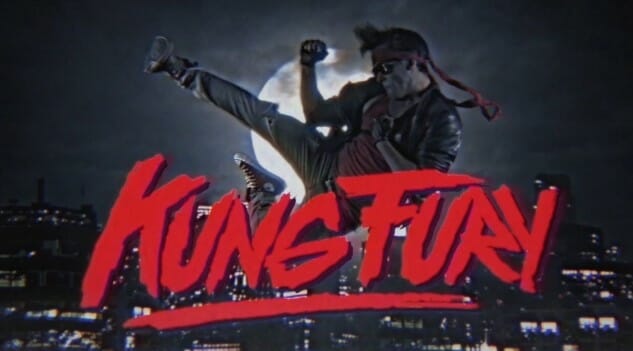
B movies. Lord knows I love ’em. You don’t write a list of the 100 greatest B movies if you don’t love ’em. For a savvy film fan, they’re easy to love. What’s hard is defining them.
Because honestly, there’s no working definition for what makes a “B movie.” Once upon a time, you could apply the title toward the cheaper second film stuck by a studio on its drive-in or grindhouse double feature, but those times are long since gone. “B movie” implies cheapness, or at least a lower budget than normal, but it doesn’t necessarily disallow a film from having a national release or box office success. It also doesn’t disallow quality—B movies may very well be BAD, but they may also be great. Perhaps they’re both, at the same time.
In the end, it may be more accurate to say that “B movie” is more of a genre movie aesthetic than it is a definition. It’s a visual look/aspect of production design that can be purposely sought out, as in the case of films such as Hobo With a Shotgun. Sometimes this works out well. In other cases, attempting to make something “fun-bad” results in a film that is simply “bad bad,” as in the case of all too many Syfy Original Movies and rushed mockbusters from The Asylum.
Netflix is a pretty deep resource when it comes to B movies … at least in terms of quantity. The streaming library is a little bit limited on old-school, classic B material, but it’s absolutely overflowing with modern, direct-to-VOD garbage. Personally, I don’t find many of these direct-to-VOD B movies quite as compelling as the theatrically released B movies of yore, so this list tends to skew a bit older. It also recognizes Netflix’s surprising depth in one random film genre: Old-school kung fu! Yes, Netflix turns out to be a treasure trove of classic kung fu, but there’s also plenty of horror, science fiction and action here as well. Let’s get to it.
 20. The Brainiac (El Baron del Terror)
20. The Brainiac (El Baron del Terror)
Year: 1962
Director: Chano Urueta
I honestly wish Netflix had more films in the library akin to The Brainiac, and less of the modern horror trash. Seeing this weird old gem of ’60s Mexican zero-budget horror makes me curious how exactly it ended up on the streaming service—what’s the story behind how this random film, about a sorcerer who returns from the dead as a brain-sucking ape man, was deemed worthy? Did someone from Netflix actually watch it at some point, or was it accidentally uploaded as part of a package deal of some kind? Has anyone (besides me) ever streamed it? Who cares? It’s a film that looks like it could very well have been shot by a young Roger Corman, featuring some guffaw-inducing monster costumes and delightfully incompetent performers. All that it’s missing is a luchador hero, but you can’t have everything. — Jim Vorel
 19. Sharknado
19. Sharknado
Year: 2014
Director: Anthony C. Ferrante
B-movie geeks and bad movie fans are not kind to the original Sharknado, and I don’t think that’s entirely fair. It gets flak from that audience for being “purposefully bad,” but it is possible to make an entertainingly goofy film in this way … it’s just pretty rare. Now dragged down by an increasingly forced run of sequels, all of which I’ve reviewed for Paste because I’m a crazy person, it’s easy to lose sight of how slapdash (and thus amusing) the first film was. There’s absolutely no budget behind Sharknado, which makes the gaffes introduced by a tight shooting schedule all the more apparent and hilarious. The sky goes from dark to sunny in between shots in the same scene. The film idles in place for 20 minutes while trying to get kids out of a school bus, just to shamelessly pad itself out to “feature length.” Tara Reid tries to get dialog to come out of her mouth, and fails spectacularly. In short: There’s fun stuff here. Don’t be a bad movie hipster; embrace the original Sharknado. The sequels, feel free to ignore. – J.V.
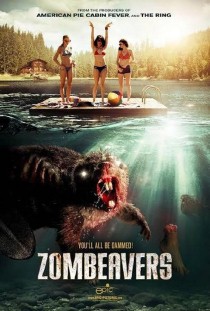 18. Zombeavers
18. Zombeavers
Year: 2015
Director: Jordan Rubin
Look, if you don’t know before you ever hit “play” exactly what you should be expecting from Zombeavers, I’m not sure how much I can help you. It’s a film about toxic waste-spawned zombie beavers, people. It’s halfhearted as both a horror film and a comedy, with a preponderance of jokes that thud and just enough that will draw an ashamed chuckle. It feels like a throwback to the straight-to-VHS horror schlock of the ’80s and ’90s—simple, kitschy premise, plenty of gratuitous nudity, lots of attempts at humor. By the time people start turning into WERE-BEAVERS near the film’s end, you’ll have settled into a good groove of mocking its flaws and enjoying its alternating shamelessness and reverence for the genre—because at least they attempt some interesting practical effects. Good on you, Zombeavers. It’s trash, but a step above the bottom of the barrel. — J.V.
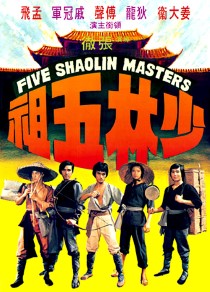 17. Five Shaolin Masters
17. Five Shaolin Masters
Year: 1974
Director: Chang Cheh
It’s hard to go wrong with any Shaw Brothers kung fu movie directed by Chang Cheh, even if Five Shaolin Masters isn’t necessarily in the upper echelon of the legendary director’s work. Like so many other “Shaolin” films, it revolves around the legendary destruction of the Shaolin Temple by the Qings in the 19th century, and in this case follows five fighters as they escape the burning of the temple and plan their revenge. The story gets downright opaque in the middle, as it becomes difficult to remember what the hell is going on and keep the characters straight, but everything comes together satisfactorily when the exiled Shaolin return to the ruins of their temple to train and take on the bad guys. Those last 20 minutes of action are definitely worth the price of admission. – J.V.
 16. Good Guys Wear Black
16. Good Guys Wear Black
Year: 1978
Director: Ted Post
The ’70s were a weird, weird time for Chuck Norris, who somehow managed to look older in his films here than he did 20 years later in Walker, Texas Ranger. It may have to do with his seeming lack of understanding of facial hair during this period, as he seemingly has no idea how to wear anything other than a crop-duster mustache. Regardless, he plays a CIA assassin/black ops soldier in this one named John T. Booker, which is coincidentally the same role he would reprise decades later in The Expendables 2. It’s standard fare: A governmental employee with a grudge sets up Norris’ team to take a fall/be eliminated, and he’s slowly drawn into the plot with a will for revenge. It sounds like the setup for an action spectacular, but Good Guys Wear Black is honestly more like a spy movie at times, and there aren’t as many overt “karate scenes” as you would expect from a film starring a guy who initially rose to fame as a karate champion. It does, however, have a couple of spectacular moments that make it stand out, and worth a watch. I won’t spoil them, but “Chuck Norris vs. guy in car” is a fair description of the highlight you’ll be remembering later. – J.V.
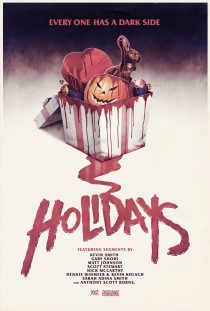 15. Holidays
15. Holidays
Year: 2016
Directors: Kevin Smith, Gary Shore, Adam Egypt Mortimer, Scott Stewart, Nicholas McCarthy, Dennis Widmyer and Kevin Kolsch, Sarah Adina Smith and Anthony Scott Burns.
Holidays is a painfully generic name for a horror movie in 2016, even an anthology, but at least this one has a bit more under the hood than you might expect upon first glance. Beware the names being used to sell it: “Kevin Smith” in particular might appear first on the list, but his segment is as lazy as you would expect—no attempt at setting any kind of real atmosphere, just some scatalogical humor meant to cover up a lack of ambition. The earlier pieces, though (this one is a bit top-heavy) are often genuinely interesting, and feel like a classic throw-back to the horror anthologies of the ’70s and ’80s from Amicus in Britain and independent producers in the U.S. The opener, “Valentine’s Day” by Kevin Kolsch and Dennis Widmyer, is particularly well shot and immediately engrossing in its visuals and casting—these guys went out of their way to find interesting faces to bring their tale of high school violence and obsession to the next level. The rest is uneven, as you see in the description of nearly any anthology, but the good segments make wading through the uninspired ones worthwhile. – J.V.
 14. Barbarella
14. Barbarella
Year: 1968
Director: Roger Vadim
Barbarella was a unique film when it was released in 1968, and it remains something very unusual as it approaches its 50th anniversary: A blend of science fiction, fantasy and erotica that plays itself both campy and straight, depending on its mood. Jane Fonda’s Barbarella is a young space vixen trained in the “art of love,” but she’s also something of an ingenue without any experience in the real world. The sets, costumes and production design rightfully earned the film attention upon its initial release, being fabulously lush and colorful—gothic grandeur in space, with more boobs, and Space Mutiny’s John Philip Law to boot. The film may have sold itself upon a vaguely defined promise of titillation, but those artistic flourishes ended up proving more influential for the next generation of ’70s science fiction. Barbarella is never going to be a film afforded much respect, but B-movie directors of the time period can testify to the lasting impact it had on both exploitation and tawdry science fiction in its day. – J.V.
 13. Executioners From Shaolin
13. Executioners From Shaolin
Year: 1977
Director: Lau Kar-leung
If you remember the story of Pai Mei, the white lotus, that David Carradine tells to Uma Thurman around the campfire in Kill Bill, then you essentially know the story of this film. Tarantino’s double-film is filled to the brim with references to classic kung fu cinema, not least of which is Gordon Liu’s Pai Mei character, who is an absolutely iconic villain in Executioners from Shaolin. A true monster, he butchers the monks of the Shaolin Temple with his nigh-invincibility, and is only brought down eventually by characters who have trained for decades specifically to find his few vulnerabilities. Pai Mei’s mastery of his bodily functions, referred to as “internal kung fu,” make him one of the most imposing villains in the history of the genre, and make this film a classic element of the genre’s lore. Bonus: Gordon Liu appears as a badass monk in the beginning who sacrifices himself against a small army of fighters to help his Shaolin brothers escape. —J.V.
 12. Wolfcop
12. Wolfcop
Year: 2014
Director: Lowell Dean
Wolfcop is full-on horror comedy, and it’s delirious good fun. When an alcoholic small-town Canadian cop gets cursed and turned into a werewolf, he retains all of his human faculties—above all, a respect for the LAW. Using his newfound werewolf superpowers, he opposes the local cabal of reptilian shapeshifters. Yep. That’s your film. It’s one of those carefully calculated modern, indie horror-comedies that was created explicitly in the hopes of someday being labeled “cult classic,” but it does its job better than most. It feels at times a bit like the neo-grindhouse aesthetic of Hobo With a Shotgun, perhaps thanks to the gore effects, although it’s nowhere near as nihilistic. More than anything, you feel a very genuine love for the utter ridiculousness of the premise. It’s a film that people clearly enjoyed the hell out of making, which makes that fun infectious to the viewer. — J.V.
 11. Kid With the Golden Arm
11. Kid With the Golden Arm
Year: 1979
Director: Chang Cheh
Another “Venom Mob” film from Chang Cheh (his recurring stable of performers), and one of the best. It mixes up the usual casting somewhat by putting the beefy Lo Mang as the titular “Kid With the Golden Arm,” who is the primary antagonist and not the hero as one might expect. It was a shift for Lo Mang, who usually played characters who were sort of powerful, likable galoots, but he shines by giving what is likely his best performance in a story about a gang of outlaws who plot to intercept a large shipment of gold. The heroes are a team of familiar Chang Cheh faces assembled to stop Golden Arm and his gang: ever-present hero Kuo Chui is a drunken master, while there’s also some fighters specializing in sword and axe combat. Honestly, Kid With the Golden Arm isn’t particularly complex or even all that original, but it’s pure, unadulterated old-school kung fu fun. —J.V.
 10.
10.  9.
9. 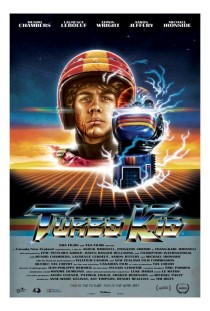 8.
8. 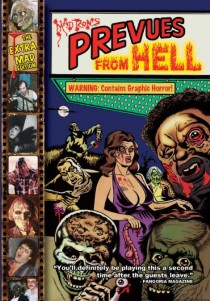 7.
7. 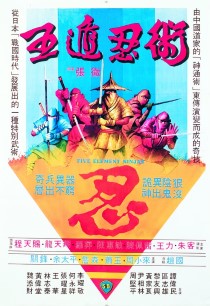 6.
6. 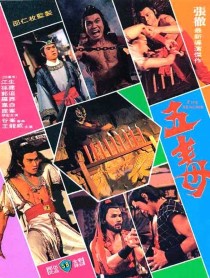 5.
5.  4.
4. 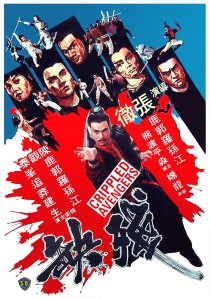 3.
3. 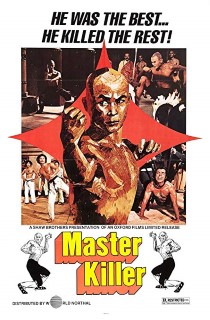 2.
2.  1.
1.